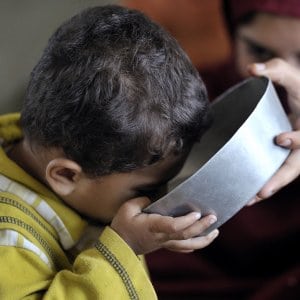In this blog my goal is to open up the subject clean water and sanitation in our world. I have chosen this topic because it is extremely important to all of us and something, we should all be entitled to, no matter where in the world we live. While substantial progress has been made in increasing access to clean drinking water and sanitation, unfortunately billions of people, mostly in rural areas, still lack these basic services. Worldwide, one in three people do not have access to safe drinking water, two out of five people do not have a basic hand-washing facility with soap and water, and more than 673 million people still practice open defecation.

COVID-19
As we all know, the COVID-19 pandemic has a major impact on our world, and advice has been given that hygiene and especially hand hygiene must be added. According to the World Health Organization, handwashing is the most effective actions you can take to reduce the spread of pathogens, including COVID-19. Yet there are so many people in the world lacking to get clean and safe water suction.
Health risks
Water is a basic necessity of life and an important resource for sustaining life. The decline in water quality endangers both human health and the ecosystem. Clean drinking water, hygiene and sanitation play an important role in maintaining health.
Every year, 801,000 children under the age of 5 die worldwide as a result of diarrhea, 88% of which is related to lack of clean water and sanitation. More than a billion people are infected by parasites from contaminated water or open feces.

Facts and figures
-1 in 4 health care facilities lacks basic water services
-3 in 10 people lack access to safely managed drinking water services and 6 in 10 people lack access to safely managed sanitation facilities.
-At least 892 million people continue to practice open defecation.
-Women and girls are responsible for water collection in 80 per cent of households without access to water on premises.
-Between 1990 and 2015, the proportion of the global population using an improved drinking water source has increased from 76 per cent to 90 per cent
-Water scarcity affects more than 40 per cent of the global population and is projected to rise. Over 1.7 billion people are currently living in river basins where water use exceeds recharge.
-2.4 billion people lack access to basic sanitation services, such as toilets or latrines
-More than 80 per cent of wastewater resulting from human activities is discharged into rivers or sea without any pollution removal
-Each day, nearly 1,000 children die due to preventable water and sanitation-related diarrheal diseases
-Approximately 70 per cent of all water abstracted from rivers, lakes and aquifers is used for irrigation
-Floods and other water-related disasters account for 70 per cent of all deaths related to natural disasters
Progress so far?
Many advances have been made in the process of a world where everyone can have clean water and sanitation. In 1990, 76% of the global population had access to safe drinking water and 54% had access to adequate sanitation facilities. In 2015, even though the population had climbed by more than 2 billion people, 91% of people had access to safe drinking water and 68% had access to improved sanitation.That means in 25 years, 2.6 billion people gained access to safe drinking water and 2.1 billion gained access to improved sanitation.

Goal 6 targets
United nations
6.1 By 2030, achieve universal and equitable access to safe and affordable drinking water for all
6.2 By 2030, achieve access to adequate and equitable sanitation and hygiene for all and end open defecation, paying special attention to the needs of women and girls and those in vulnerable situations
6.3 By 2030, improve water quality by reducing pollution, eliminating dumping and minimizing release of hazardous chemicals and materials, halving the proportion of untreated wastewater and substantially increasing recycling and safe reuse globally
6.4 By 2030, substantially increase water-use efficiency across all sectors and ensure sustainable withdrawals and supply of freshwater to address water scarcity and substantially reduce the number of people suffering from water scarcity
6.5 By 2030, implement integrated water resources management at all levels, including through transboundary cooperation as appropriate
6.6 By 2020, protect and restore water-related ecosystems, including mountains, forests, wetlands, rivers, aquifers and lakes
6.A By 2030, expand international cooperation and capacity-building support to developing countries in water- and sanitation-related activities and programmes, including water harvesting, desalination, water efficiency, wastewater treatment, recycling and reuse technologies
6.B Support and strengthen the participation of local communities in improving water and sanitation management
Sources
https://www.un.org/sustainabledevelopment/water-and-sanitation/
https://www.globalcitizen.org/en/content/water-and-sanitation-explainer/
Suurin osa Showcasen blogeista on toteutettu osana Laurean opintojaksoja. Koko koulutustarjontaamme voi tutustua nettisivuillamme. Tarjoamme kymmenien tutkintoon johtavien koulutuksien lisäksi myös paljon täydennys- ja erikoistumiskoulutuksia sekä yksittäisiä opintojaksoja avoimen AMK:n kautta!
